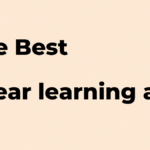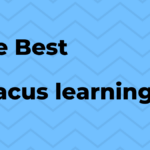There are many reasons why people might need an ear training app. Some people might need it to improve their listening skills for work or school, while others might need it to improve their musical skills. Ear training apps can also be helpful for people with hearing difficulties, as they can help them learn how to identify different sounds and learn how to make the most of their hearing abilities.
An ear training app must provide a variety of exercises to help the user improve their auditory skills. The app should also provide feedback on the user’s progress so that they can track their progress and make adjustments as needed.
The best ear training app
Ear Training with Dr. Ian Smith
Ear training is the process of learning to identify and discriminate sounds. The goal of ear training is to improve your ability to hear and understand spoken language.
There are many different methods for ear training, but the most common approach is to listen to recordings of spoken language and practice identifying the different sounds that are being made. You can also try listening to music with specific sound patterns, or using a method called “sound sorting” which involves learning to identify different types of noises (e.g. animals, vehicles, people) in order to better understand speech.
There is no one right way to do ear training, but it is important to find a method that works for you and that you are comfortable with. Some people prefer to listen to recordings repeatedly until they can identify all the sounds correctly, while others may find it helpful to start with smaller sound sets and work their way up. The most important thing is to keep practicing – Ear training can take time but with regular effort it can be a valuable skill that will help you improve your communication skills and overall listening comprehension abilities.
Ear Training with Music
Ear training with music is a process of learning to identify and reproduce specific sounds using your ears. Ear training with music can be used to improve your musical skills, or to learn new sounds.
There are a few different ways to approach ear training with music. One method is to listen to recordings of the sounds you want to learn, and try to identify the sound. Another method is to listen to music and try to reproduce the sound. The third method is called “ear training with tones”, and it involves listening to tones and trying to identify which tone it is.
The best way to start ear training with music is by listening to recordings of the sounds you want to learn. You can find recordings of many different sounds on websites like YouTube or SoundCloud. Once you have found a recording of the sound you want, try to identify it. For example, if you are trying to learn how to play the piano, you might listen to a recording of someone playing the piano, and try identify which key they are playing in.
Another way you can start ear training with music is by listeningtomusicandtryingtoreproducethesound. You can do this by listeningtoaudiofilesonyourcomputerorbydownloadingmoviesormusicfromtheinternetandlisteningtoitwithanaudioplayerlikeiTunesorSpotify. Oryoucanjustsitdownandlistentoclassicalmusicthewayitwas meanttobeheard:liveinconcertwithotheraudiencemembers!
The third way you can start ear training with music is called “ear training with tones”. Thismethodinvolveslisteningtoclassesands Tryingtotrytoconstructthetonefromthesoundofthesceneorpieceofmusicyouare ListeningTo . For example, ifyouare ListeningToarecordingofaviolinistplayinga Bach piece,youmighttrytoconstructthetoneoftheviolinistbycountingthenumberofhitsofthesoundoftheviolinbeforeitchangesintonoise(called timbre).
Ear Training with the Brain Trainer
The Brain Trainer is a unique ear training program that uses brainwave entrainment to help you learn how to hear better. The Brain Trainer was designed by a hearing specialist to help people learn how to hear better and improve their listening skills.
The Brain Trainer uses a variety of different brainwave frequencies to help you learn how to focus and concentrate, which is essential for improving your hearing skills. The Brain Trainer also includes a built-in timer that helps you track your progress, and a personalized feedback system that provides you with feedback on your progress.
The Brain Trainer is the perfect tool for anyone who wants to improve their hearing skills, and it’s easy to use. Just plug in the Brain Trainer, set it up, and start learning how to hear better!
Ear Training for Musicians
Ear training for musicians is the process of learning to identify and reproduce specific sounds using your ears. Ear training can be used to improve your musical skills, or to learn new sounds.
There are a few different methods you can use to ear train for musicians. One method is called “frequency recognition.” This method involves listening to sound samples and trying to identify the frequency at which they were recorded. You can also use “time recognition” techniques, in which you listen to sound samples and try to identify the length of time it took for them to reach their peak volume.
Another method is “rhythm recognition.” This involves learning how different rhythms are played on instruments, and then trying to replicate them using your own instruments. You can also use “melody recognition” techniques, in which you try to identify melodies played on instruments.
Whatever method you choose, make sure that you practice regularly. Ear training is a skill that will improve with practice, so don’t be discouraged if it takes a while for results to show up. With enough effort, you’ll eventually be able to ear train like a pro!
Ear Training for Kids
Ear training for kids is a great way to improve your child’s auditory skills. Ear training can help your child learn to identify and produce specific sounds, which can help them with their language development and overall cognitive abilities.
There are a few different ways to approach ear training for kids. One approach is to have your child listen to a series of recordings that contain specific sounds. Your child will need to identify the sound and then reproduce it. Another approach is to have your child listen to music that contains specific sounds. Your child will need to identify the sound and then reproduce it. Finally, you can have your child practice identifying sounds by listening to words or phrases that contain specific sounds.
Once your child has mastered the basics of ear training, they can start practicing more challenging tasks. For example, your child could practice identifying different vowel sounds by listening to words containing those vowel sounds or they could practice identifying consonants by listening to words containing those consonants.
Ear Training for Adults
Ear training for adults is a process of learning to identify and produce specific sounds by listening and repeating them. Ear training can be used to improve communication, focus, and memory skills.
There are many different methods for ear training, but the most common approach is to listen to a series of recordings of familiar sounds and try to reproduce them. You can also try to identify new sounds by listening for brief periods and then trying to reproduce them.
Some people find it helpful to use ear training software or apps that provide auditory feedback as they practice. This feedback helps you learn how well you are performing and can help you improve your skills over time.
The ABCs of Hearing Loss Prevention: A Comprehensive Guide to Hearing Health and Ear Training
The ABCs of Hearing Loss Prevention is a comprehensive guide to hearing health and ear training. Written by two experienced audiologists, this book covers all the basics of hearing loss prevention, from understanding the risk factors to implementing effective strategies for preventing hearing loss in both children and adults.
The ABCs of Hearing Loss Prevention includes:
-An overview of the causes and effects of hearing loss
-A guide to understanding your own hearing abilities
-Tips for preventing hearing loss in children
-Effective strategies for preventing hearing loss in adults
-How to find a qualified audiologist and ear specialist
-A section on self-care, including tips for reducing noise exposure and using soundproofing products
Hear What You’re Missing! The Ultimate Guide to Audiobooks for the Deaf and Hard of Hearing
Hear What You’re Missing! The Ultimate Guide to Audiobooks for the Deaf and Hard of Hearing is the perfect resource for anyone who loves audiobooks, but who also has difficulty hearing. This comprehensive guide covers everything from choosing audiobooks to listening tips and tricks, to finding audiobook versions that are specifically designed for the deaf or hard of hearing. With detailed information on over 100 different audiobooks, Hear What You’re Missing! is an essential tool for anyone who loves to listen to stories.
Audiobook Finder: Find and Listen to Audiobooks on Your iPhone, iPad, or iPod
Audiobook Finder is the perfect app for audiobook lovers! With Audiobook Finder, you can find and listen to audiobooks on your iPhone, iPad, or iPod touch. You can browse by author, title, or genre, and listen to audiobooks offline or online. Audiobook Finder is also compatible with the Apple Music streaming service.
Things to consider when choosing a ear training app
-The app should be easy to use and navigate.
-The app should have a variety of exercises to choose from.
-The app should be affordable.
-The app should have a support system available if needed.
Good Features
1. Ability to customize exercises to match your own listening abilities.
2. Variety of exercises to keep you engaged and motivated.
3. Feedback on your progress so you can track your progress and improve your skills.
4. Option to create custom playlists of exercises for easy access and repetition.
5. Option to share your progress with friends or family for encouragement and support
The best app
1. Ear Training with Music is the best ear training app because it has a wide variety of music tracks to choose from, as well as a built-in timer that helps you track your progress.
2. Ear Training with Music also offers personalized feedback, so you can always be sure you’re getting the most effective training possible.
3. Finally, Ear Training with Music is extremely user-friendly – even beginners can start improving their ear training skills in no time at all!
People also search for
– Ear Training
– Audiobooks
– Music
– Podcastsapps.

ForoKD editor, programmer, game designer and blog review lover

















